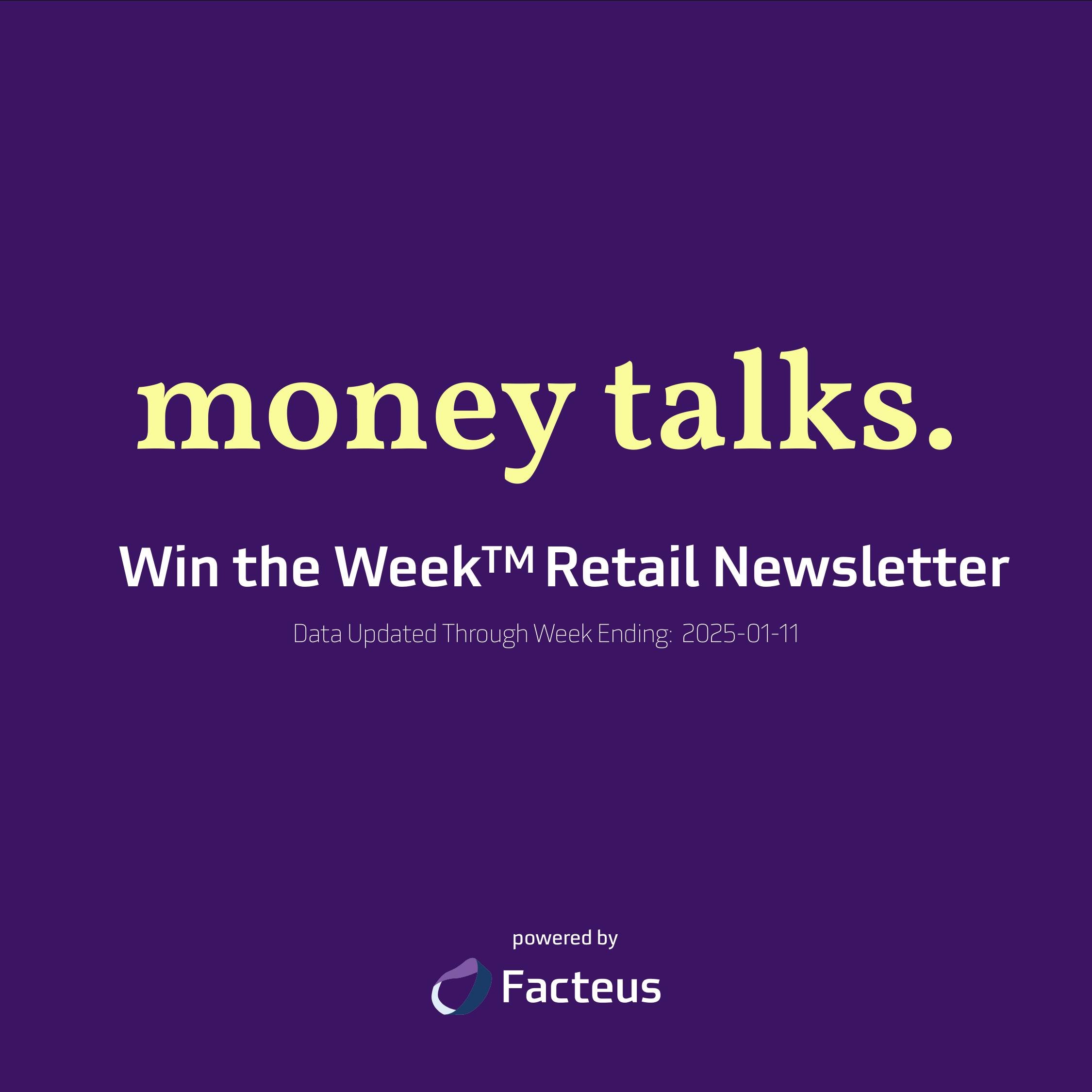Facteus Talks Prime Big Deal Days Consumer Spending, Holiday Shopping Expectations on Schwab Network
Discover What Transaction Data for October Prime Big Deal Days Reveals for Amazon’s Market Share & the 2023 Holiday Shopping Season
October 18, 2023, PORTLAND, Ore. — Prime Big Deal Days on Oct. 10th and 11th was far more than just a successful sales and profit-generating event for e-commerce giant Amazon (NASDAQ: AMZN). Beyond boosting Amazon’s revenue and market share, this shopping event also revealed key insights about:
The differences between Prime Day in July and Prime Big Deal Days in October
Amazon’s competitive positioning in the retail market, particularly when it comes to Amazon market share performance versus prominent competitors, like Best Buy (BBY), Target (TGT), and Walmart (WMT)
What retailers may be able to anticipate for the 2023 holiday shopping season
Elaborating on what the latest consumer transaction data reveals, Brian Callahan, Product Manager of Investment Management at Facteus, sat down with Caroline Woods, Senior Markets Correspondent at the Schwab Network. Here’s what they discussed and why retailers, investors, and others may want to listen up.
How Does Prime Day Spend Vary in October versus in July?
Debit and credit card transaction data from Amazon Prime Day events highlights significant growth from last year’s sales while also demonstrating the facts that:
July Prime Day is NOT the same event as Amazon’s October Prime Big Deal Days.
Consumer spending for Amazon sales events was higher in July than in October.
In fact, the latest consumer spending data for Amazon Prime Day transactions uncovered the following about the July versus October events and the transactions occurring over each.
These shopping and spending trends offer deeper insights into the financial dynamics surrounding Amazon's Prime Day events. They also speak to greater developments in the e-commerce and retail landscape, holding up valuable signposts about what may lie ahead for holiday shopping and spending.
Why Did Consumer Spending Drop Over October Prime Big Deal Days?
Tightening their wallets, consumers spent roughly 30% less over the October Prime Big Deals Days than during Amazon’s July Prime Day event. That substantial decline has sparked many questions and worries, with experts wondering what’s behind the dramatic drop and whether:
Consumers are running out of money.
Inflation is tightening its grip on consumer spending.
Shoppers are simply waiting for bigger, better deals — especially knowing that the Black Friday shopping holiday is on the horizon.
Addressing some of these concerns, Facteus’ Brian Callahan explained to the following to the Schwab Network:
I don’t think it’s a situation with money because we’re seeing big-ticket items are still really a hit. I think the bigger note from the October Prime Day is that we’re getting a little closer to the holiday season.
Delving into this more, Mr. Callahan detailed how the latest transaction data from the October Amazon Prime event show that:
In July, consumer spending tends to involve a lot more smaller purchases. The items bought usually align with what an individual would typically be buying around that time of the year.
In October, consumer spending is happening with the awareness that year-end sales are approaching. So, consumers might not be holding off on how much they spend.
Amazon Consumer Spending Trends, Market Share in “Discount Deal Day” Wars
In the wake of October Prime Big Deals Days, Amazon probably won’t see a dropoff in consumer purchases and spending.
Why not?
There are several reasons, most of which come down to the fact that Amazon has created a pretty stellar game plan for:
What to put on sale at any given time of the year
How to keep their customers buying
How to help their customers space out their purchases throughout the year
With extraordinary knowledge of their customers, Amazon has effectively leveraged two sales events to drive attention and traffic to their website year-round — and to leverage the October Prime Big Deal Days event to bring more eyeballs to Amazon.com right before the holiday shopping season.
With that, Amazon is still the big winner in the Discount Day “wars,” beating out competitors Target and Walmart. In fact:
Amazon’s July event typically brings gains of ~20 points in market share among this retailer’s tightest competitive set.
The Oct event, though less spectacular than the July event, still tends to result in gains of about 15 points of market share for a 2- to 3-day period.
In a given quarter, these events can end up adding an extra day of sales to Amazon’s bottom line.
Consequently, Amazon has been effective at retaining and growing market share with these events, seeing more muted growth in recent years.
Expectations for Holiday Spending & Shopping in 2023, Based on Oct. Prime Day Data
Retailers, big and small, are taking notes and refining their holiday selling strategies in light of the latest insights revealed by Amazon transaction data for the October Prime event. WIth that, many industry experts are anticipating the following for the 2023 holiday shopping season:
Earlier discount offers: Retailers will likely start rushing to offer consumers discounts sooner than they have in the past. Worried about missing out on sales if their deals come too late, more retailers will hurry to be first and get early sales in an effort to retain some market share.
More discount-driven purchasing: While not new to holiday shopping and consumer shopping behaviors, discount-driven purchases will likely step up this year, particularly with some sectors hit harder by inflationary pressures.
Remarkably, Walmart has already announced that it will stay closed on Thanksgiving, potentially signaling less concern about losing sales to competitors during the 2023 holiday shopping season. Whether that pays off or not — and how consumer spending will fare over holiday sales — remains to be seen.
What Could This Mean for 2024 Amazon Big Deal Days?
Looking ahead to 2024, Amazon’s Prime Big Deal Days are likely to continue playing a significant role in shaping consumer shopping behaviors and e-commerce trends. Based on the transaction data from 2023, a few key factors are worth considering as retailers and investors prepare for next year’s events:
Earlier Consumer Anticipation: As shoppers grow increasingly familiar with Amazon’s dual sales events in July and October, the likelihood of them planning their spending around these dates will grow. This anticipation could drive even higher engagement in 2024, with consumers spacing out their purchases more strategically across the year to take advantage of anticipated discounts.
Greater Competitor Responses: The competitive landscape may intensify as rivals like Walmart, Target, and Best Buy seek to capture some of the consumer spending surge driven by Amazon. In 2024, expect these retailers to fine-tune their own sales events to better align with, or counteract, Amazon’s Big Deal Days, perhaps by offering deeper discounts or unique promotions to lure shoppers away from Amazon.
Enhanced Amazon Personalization & Offers: With Amazon’s extensive data on consumer habits, the company is likely to become even more adept at targeting specific groups of shoppers in 2024. Personalized recommendations, loyalty rewards, and exclusive deals for Prime members could play an even bigger role in next year’s sales, encouraging consumers to spend more during Prime Big Deal Days.
Ultimately, 2024’s Big Deal Days could deliver even more growth for Amazon, especially as consumers become accustomed to these strategic sales events leading into the holiday shopping season.
How Amazon Big Deal Days Have Become a New Fixture in the Holiday Shopping Season
Amazon Big Deal Days, while initially separate from traditional holiday shopping events, have now become an undeniable fixture in the end-of-year shopping season. As a counterpart of Amazon Prime Day in July, Big Deal Days in October not only drives revenue for this powerhouse e-commerce retailer, but it also has reshaped consumer expectations for discounts leading into the holidays while setting a new stage for retail competition ahead of the holiday shopping season. Some of the pivotal impacts Big Deal Days has had include:
Priming Holiday Shoppers: With Big Deal Days positioned weeks before Black Friday and Cyber Monday, Amazon has effectively extended the holiday shopping season. Consumers are now trained to expect substantial discounts earlier in the year, helping Amazon motivate and capture more spending during a time that’s traditionally slow for retailers.
Creating a Year-Round Shopping Rhythm: By hosting both July and October sales, Amazon paces its “super discount” seasons while keeping consumers engaged throughout the year. This tactic has allowed Amazon to dominate not just during the traditional holiday period but also well before it, forcing competitors to adjust their own strategies.
Influencing Broader Retail Trends: The success of Prime Big Deal Days has prompted other retailers to follow suit, adjusting their discount strategies and pushing sales earlier in the season. The "Discount Day Wars" have led to an industry-wide shift in how and when retailers offer deals, making October an integral part of the holiday shopping timeline. In fact, some big box retailers, like Walmart, have jumped on the Big Deals Days bandwagon, running their own discount events at the same time.
Remarkably, Amazon’s Big Deal Days are no longer just sales events—they are now critical moments in the holiday shopping journey, shaping how consumers and retailers approach the season. This dual-event strategy has solidified Amazon’s position as a leader in e-commerce, giving it a competitive edge that’s increasingly difficult to match.





